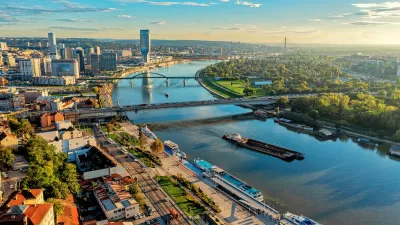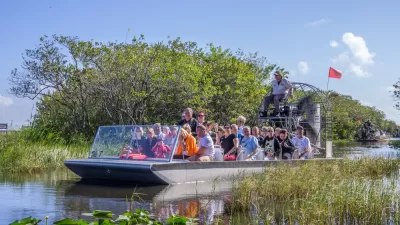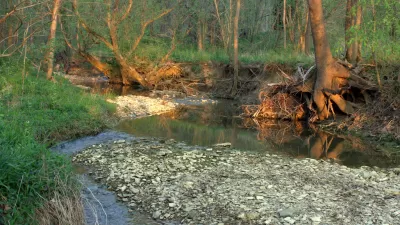Restorationists and environmentalists are placing their focus on urban streams and creeks, which struggle with urban pollution. Working to clean them up is turning out to be a good way to create jobs and stimulate the local economy.
Like many urban areas, a handful of towns in the San Francisco Bay Area have these creeks and streams running through, and pollution has been a major problem. For years it was a problem that was virtually ignored. But now it's starting to make economic sense to pay a little more attention to protection of these water sources.
"Today, however, a new generation of Bay Area restorationists is working with renewed vigor to mobilize poor residents around their local waterways, on the premise that improving the local environment can also stimulate the local economy. In spite of the recent downturn, there are hints at federal, state and local levels of a sweeping green jobs initiative. It's a bold attempt to reconcile key ecological principles with the functions of the marketplace.
From an ecological standpoint, it couldn't be happening at a more critical time. In February, more than two dozen Bay Area streams were found to be in violation of the Clean Water Act. Collectively, these small streams have become a massive conveyor belt, sending vast quantities of trash and toxins into the Bay and Pacific Ocean.
The Urban Creeks Council, one of the region's most prominent groups, has taken a wide-scale approach to its troubled waterways, creating a comprehensive restoration plan for Wildcat and San Pablo creeks. Funded by a four-year, $750,000 state and federal grant, the proposal includes restoration of greenbelted stream channels and removal of invasive plants, not to mention summer jobs for local high schoolers."
FULL STORY: Rebooting Urban Watersheds

Planetizen Federal Action Tracker
A weekly monitor of how Trump’s orders and actions are impacting planners and planning in America.

Chicago’s Ghost Rails
Just beneath the surface of the modern city lie the remnants of its expansive early 20th-century streetcar system.

San Antonio and Austin are Fusing Into one Massive Megaregion
The region spanning the two central Texas cities is growing fast, posing challenges for local infrastructure and water supplies.

Since Zion's Shuttles Went Electric “The Smog is Gone”
Visitors to Zion National Park can enjoy the canyon via the nation’s first fully electric park shuttle system.

Trump Distributing DOT Safety Funds at 1/10 Rate of Biden
Funds for Safe Streets and other transportation safety and equity programs are being held up by administrative reviews and conflicts with the Trump administration’s priorities.

German Cities Subsidize Taxis for Women Amid Wave of Violence
Free or low-cost taxi rides can help women navigate cities more safely, but critics say the programs don't address the root causes of violence against women.
Urban Design for Planners 1: Software Tools
This six-course series explores essential urban design concepts using open source software and equips planners with the tools they need to participate fully in the urban design process.
Planning for Universal Design
Learn the tools for implementing Universal Design in planning regulations.
planning NEXT
Appalachian Highlands Housing Partners
Mpact (founded as Rail~Volution)
City of Camden Redevelopment Agency
City of Astoria
City of Portland
City of Laramie





























